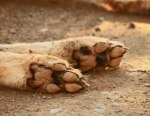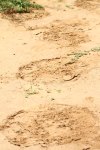I will honestly admit I forgot about these life lessons blogs. Well, I didn’t forget about the life lessons. I just forgot to create more blog posts around them. But with #WorldElephantDay upon us, I can’t think of a more pertinent life lesson that hits the heart of what elephants are facing today than this one – the need to value family.
I dedicate this blog to elephants not just because they live in family groups and value each other, but because they are part of our animal family, and we are not valuing them. Unless they are dead. And I think that’s pretty kak, to borrow a word from South Africa’s vast and creative repertoire of words.
Elephants are highly intelligent, sentient beings. They mourn their dead. They celebrate the living. They play, they fight, they hold grudges. They remember. Yes, they remember. Haven’t you ever heard the saying “I have a memory like an elephant?” There’s an excellent reason for that analogy. Don’t believe it? Piss off an elephant. They won’t forget you, and they won’t hesitate to get retribution. You don’t want an animal that can weigh up to 7 tons and can blast through forests and flatten cars without breaking stride targeting you for retribution. I have seen them take down fully grown trees without even uttering as much as a tiny grunt of exertion. It was awe-inspiring. And humbling. And it made me reevaluate how much (or, more appropriately, how little) I could rely on my vehicle to protect me in the event of a committed charge from an angry pachyderm.
Solo elephants are fun to watch, but – to me – it’s elephant social dynamics that are most fascinating to see. Herds are led by a matriarch, the oldest elephant in the group. She and the other elder females pass on knowledge and wisdom to the rest of the members of the group. The matriarch remembers migration routes and imparts that information on to her younger siblings, daughters, and granddaughters and their offspring.
Males stay with the herd until they reach the teenage years, at which time they are permanently ousted from the group and seek their fortunes in finding love elsewhere.
The elders take a vested interest in teaching the young, and all members of the herd take a vested interest in protecting each other from outside threats. They rally around their own and put up an impressive front when threatened. And this isn’t just the females, which dominate the herd dynamic. Bull males will often mentor younger bulls. Kill the elder elephants and you kill the teachers, which is why so many ‘rogue’ male elephants end up getting shot as ‘problem animals.’ They haven’t been taught how to stay in line. They are teenagers with no guidance and nothing to lose, mainly because they don’t know any better. No different than human teenagers in the same situation.
It is no longer surprising to me that the main reason for these ‘problem animals’ is human activity.
Elephants are a keystone species, which means ecosystem stability depends on their existence in it. Yet elephants, like every other animal on this planet, are under threat from that very distant and selfish relative who manages to cause infinite damage to nature without even batting an eyelash or bothering to consider the ramifications of its actions. Yep, good ol’ humankind. Elephants are losing the battle to survive because of humanity’s tendency to take without thinking, to take without giving back, and to take without considering the cost. And that cost is life. Life of elephants.
All for ivory.
Elephants are under massive threat because we like their teeth. Which, if you think about it, has to be one of the most ridiculous things in the world. We kill them for their teeth. We kill these incredible, sentient beings with families, histories, and personalities, for their teeth. And not all their teeth. Just those two big ones that stick out. The tusks. When did humans become so enamored of enamel? And why? Why are we the only species in the world that will happily destroy a species so we can put a trinket around our neck or on our mantle? Or a head on a wall?
Though elephants are the largest land animals on earth, they are in many ways a mirror of ourselves. They work together and figure things out. They are curious. They are caring. And they are disappearing at a rate of close to 50,000 per year. They are running out of time. We are running out of time to save them.
To see them go extinct will be catastrophic not only for the ecosystems they keep in balance, but for future generations of our own, who will never know the magnificent, clever, generous, tender, and formidable nature of these unique life forms. If we allow them to go extinct, we allow the worst of our nature – greed, ignorance, and ego – to win out. If we lose them, we might as well admit we lose a part of ourselves, and a good part at that. And we can never get it back.
Please, let us value our family. Don’t buy ivory products. Don’t ride elephants. Don’t shoot them for sport. Let us come together to ensure elephants survive long into the future.
If you want to learn more about the poaching crisis decimating elephant populations (and see if you might be unknowingly contributing to the damage) consider watching a documentary called The Ivory Game. This isn’t a blame game. It’s an awareness game. And if we’re not willing to educate ourselves about our potential role in a problem, how can we expect to fix the problem, right?
If you’re keen on learning more about elephants in general, check out the following links.
Also, I’m going to be posting some of my elephant stories in the upcoming weeks, so keep an eye out if you want to hear about some personal experiences with these gray giants.
Defenders of Wildlife: Basic Facts About Elephants
Smithsonian: 14 Fun Facts About Elephants
Africa Geographic: 10 Fascinating Facts About Elephants
TED-Ed Blog: 12 Amazing Facts About Elephants
Scientific American: Elephants Are Even Smarter Than We Realized
San Diego Zoo Zoonooz: Dangerous Road – Demand and Greed Drive the Market
























































